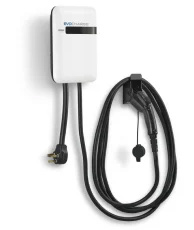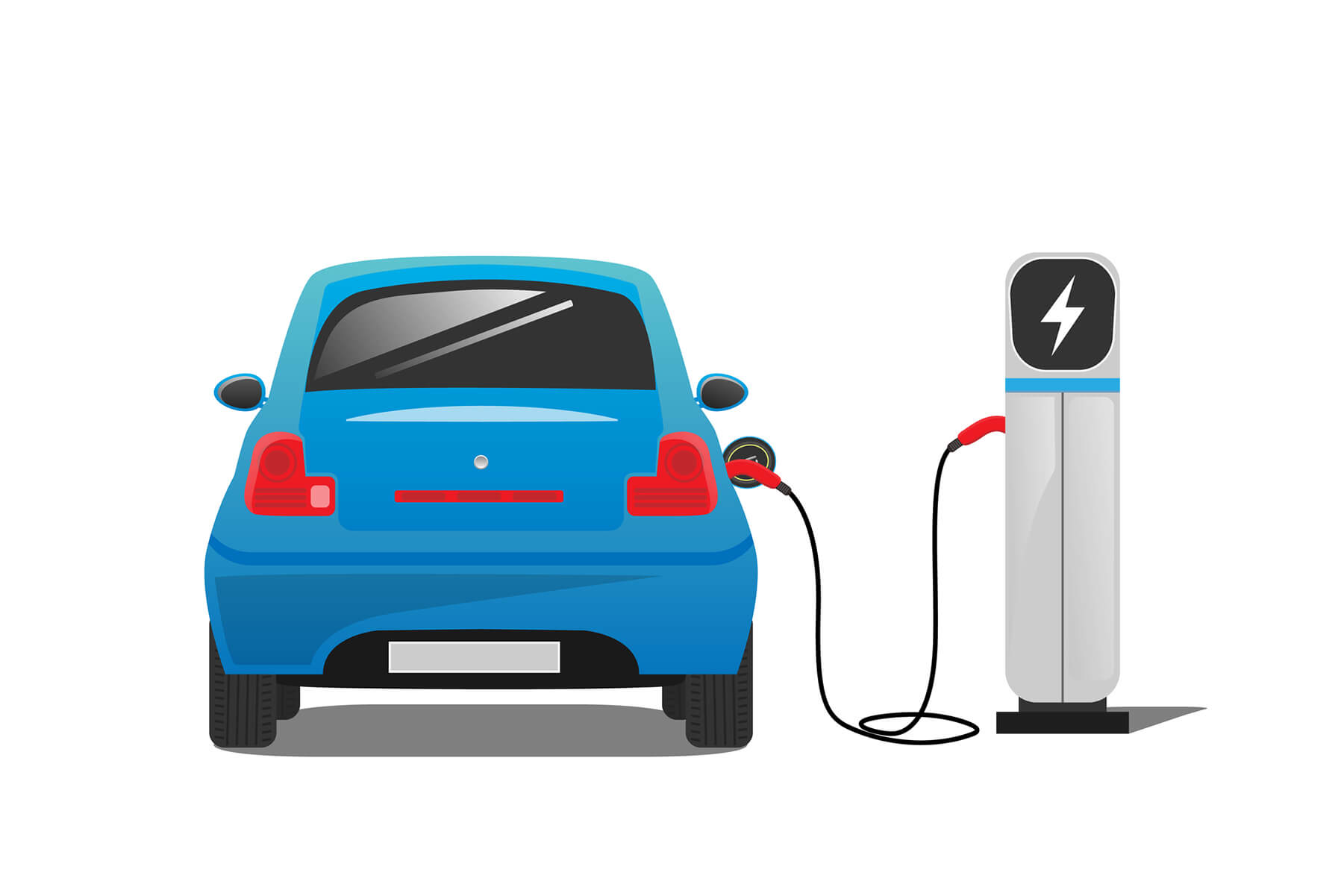One of the biggest concerns for electric vehicle (EV) owners is knowing when and how to charge their vehicle. It makes sense: The average American has spent their life driving around in gas-powered cars, filling up at one of the hundreds of thousands of gas stations as the gauge creeps towards empty. Charging one’s EV takes a little more planning, but with the growing demand and incentives for alternatives to gas-powered cars, Level 2 public EV charging stations are becoming a more common sight.
So whether you’re the owner of an EV or looking to add a public EV charging station to your commercial property, here are just a few things you should know about how an EV charger works.
What Is an EV Charger?
Both electric vehicles and plug-in hybrid electric vehicles require an EV charger to keep the battery full, just like any chargeable device or electronic.
How Does EV Charging Work?
At its most basic, an EV charger pulls an electrical current from either a 240v outlet or the grid it’s hardwired to and delivers that electricity to the vehicle, just like any other appliance or device you charge by plugging into the wall.
EvoCharge EVSE Level 2


-
6 hours to a full charge
-
7.7 kWh max output
-
Compatible with mobile app
EvoCharge’s standard EVSE Level 2 charger is a simple plug-and-charge solution for the basic needs of charging your vehicle at home quickly and safely.
Chargers Plus into Most EVs—And Adaptors Are Available
For the most part, a J1772 plug is standard for EVs—that is, unless you have a Tesla or are trying to use a Tesla EV charging station. Think of it as a device charging cord: If you have a USB-C cord, but your device takes Mini-USB, the USB-C cord can’t be used to charge your device without an adaptor.
Because Teslas use their own form of connector from the device to the vehicle, a Tesla charger cannot be used on a non-Tesla vehicle, and a non-Tesla charger cannot be used on a Tesla vehicle without an adaptor.
Adaptors do exist and can be purchased online, but it’s important for drivers to note what type of charger they’re parking in front of. Additionally, commercial entities that want to provide EV charging on their property or parking lots should take into consideration that buying only Tesla chargers will leave many EV drivers unable to use your services.
Setup Your Home Charging Solution
The EVSE or iEVSE Home comes with the necessary hardware to mount and install your new Level 2 charger inside your garage or outside your home. If you want to take your charging station with you to a second home or cabin, an additional mounting plate will make it convenient to transport and install near a 240v plug.
Our EV home charging stations are small in size, simple to use, and feature fast, safe and efficient charging. They are a cost-effective and convenient option for keeping your EV powered and ready to go whenever you need it. We offer non-networked charging solutions in addition to Wi-Fi-enabled chargers that are simple to use straight from our intuitive app. Answer a few simple questions through our Charging Station Builder and EV Charging Time tools to help determine the best charging solution to fit your needs as you decide how to install an EVSE at home.
How Do Public EV Charging Stations Work?
If you are parking in front of an EV charging station, there are a few things you’ll need to determine. For one, the station may be provided free of charge, may require a key FOB or other access device, or it may require credit card payment—similar to other parking situations such as only being allowed to park in a lot for free if you’re a customer, or you may need to pay a parking meter during specific times and on specific days. The device and posted notices should make it clear how to use the charging station.
For organizations looking to add public EV charging stations to their property, EvoCharge’s iEVSE and iEVSE Plus give you options when it comes to how others will use your charger. Both units allow you to control output and charging times, and the iEVSE Plus has added 4G LTE and RFID card reader capabilities so you can use the charger to generate income.
Plan With Public EV Charging Stations in Mind
Once you start to notice public EV charging stations, you’ll begin to incorporate them into your schedule, such as planning on running an errand last so you can utilize the chargers in their parking lot.
Commercial organizations will want to think about how your business can be incorporated into others’ daily plans: Are your customers or visitors more likely to frequent your location if you offer a public EV charging station? Might they stay longer if they know they’re getting an extra charge every additional minute they spend in your establishment? Can your company become your clients’ go-to location to run errands if they know you have provided a public EV charging station? The importance is in knowing your customer and understanding how incorporating an EV charging station to your business can help provide a service.
Want to add or upgrade EV charging stations to commercial properties?
With true Open Charge Point Protocol (OCPP), EvoCharge commercial EV charging stations feature a range of amenities, including 4G LTE and RFID card reader capabilities – allowing you to provide convenient charging.
 EVSE |
 iEVSE |
 iEVSE Plus |
|
|---|---|---|---|
| Non-Networked | |||
| Wi-Fi Enabled | |||
| Wi-Fi & 4G LTE Cellular | |||
| RFID Technoloy | |||
| Shop Now | Shop Now | Shop Now |



